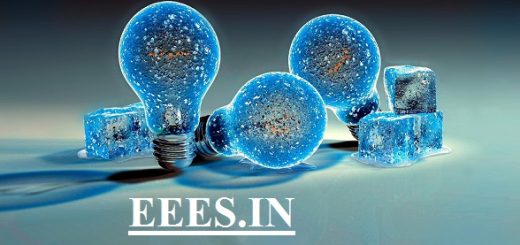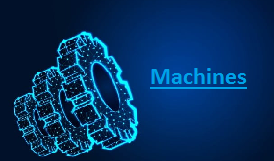Types of D.C. Generators – Separately Excited and Self Excited
Types of D.C. Generators
The magnetic flux in a DC machine is produced by the field coils carry current. The circulating current in the field wingdings produces a magnetic flux, and the phenomenon is known as Excitation.The magnetic field in a d.c. generator is normally produced by electromagnets rather than permanent magnets. Generators are generally classified according to their methods of field excitation.
They are classified as :
(i) Separately excited d.c. generators
(ii) Self-excited d.c. generators
The behavior of a d.c. generator on load depends upon the method of field excitation adopted.
Separately Excited D.C. Generators
A d.c. generator whose field magnet winding is supplied from an independent external d.c. source (e.g., a battery etc.) is called a separately excited generator. A DC generator whose field winding or coil is energized by a separate or external DC source is called a separately excited DC Generator. The flux produced by the poles depends upon the field current with the unsaturated region of magnetic material of the poles.


Self-Excited D.C. Generators
A d.c. generator whose field magnet winding is supplied current from the output of the generator itself is called a self-excited generator. Depending upon the manner in which the field winding is connected to the armature, namely;
A d.c. generator whose field magnet winding is supplied current from the output of the generator itself is called a self-excited generator. Depending upon the manner in which the field winding is connected to the armature, namely;
(i) Series generator
(ii) Shunt generator
(iii) Compound generator.
Series generator:
In a series wound generator, the field winding is connected in series with armature winding so that whole armature current flows through the field winding as well as the load. Field winding carries the whole of load current, so it has a few turns of thick wire having low resistance.
- Application: DC series wound generators are used in DC locomotives for regenerative braking for providing field excitation current and Used as a booster in distribution networks.
Shunt generator:
- In a shunt generator, the field winding is connected in parallel with the armature winding so that terminal voltage of the generator is applied across it.
- The shunt field winding has many turns of fine wire having high resistance. Therefore,only a part of armature current flows through shunt field winding and the rest flows through the load.

Compound generator:
In a compound-wound generator, there are two sets of field wingdings on each pole 1) one is in series and 2) the other in parallel with the armature.
A compound wound generator may be:
(a) Short Shunt Compound Generator: In which only shunt field winding is in parallel with the armature winding

(b) Long Shunt Compound Generator: In which shunt field winding is in parallel with both series field and armature winding.




Recent Comments